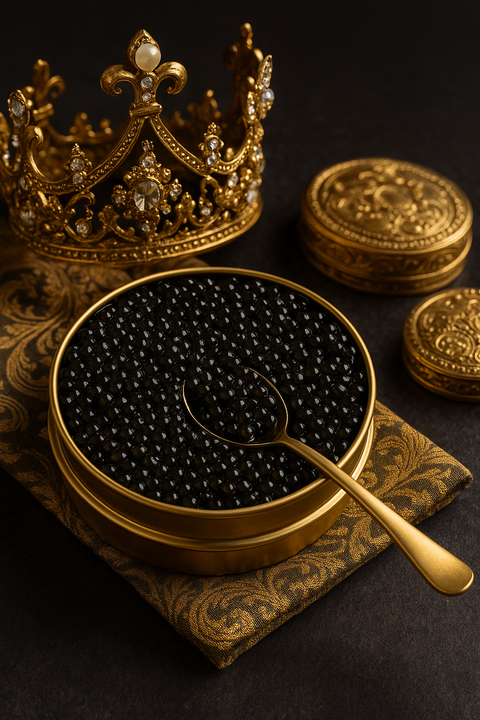Ancient Origins
-
Persian Empire (circa 10th century BCE): The word "caviar" likely originates from the Persian word khav-yar, meaning "cake of strength." Persians were among the first to harvest and consume sturgeon roe from the Caspian Sea, believing it had healing powers and could boost strength.
-
Ancient Greeks and Romans: Caviar was considered a delicacy, served at lavish banquets. The Greeks and Romans imported it from the Black Sea and praised its refined taste.

Middle Ages to Renaissance
-
Russia and Eastern Europe (13th–16th centuries): Caviar became integral to Russian and Eastern European diets, especially among Orthodox Christians during fasting periods when meat was prohibited. Sturgeon from the Volga River and Caspian Sea was the primary source.
-
Russian Tsars: By the 17th century, caviar was elevated to a luxury food associated with royalty and nobility. Tsarist Russia developed a thriving caviar industry, exporting it across Europe.

19th and Early 20th Century
-
Global Expansion: Caviar became widely known in Western Europe and the United States. Surprisingly, in the late 19th century, the U.S. (especially around the Delaware River) was one of the largest producers of caviar and even exported it to Europe.
-
Overfishing and Scarcity: Due to high demand, sturgeon populations began to decline, especially in the Caspian Sea and North American rivers. By the early 20th century, overfishing led to a sharp decrease in availability, increasing prices and exclusivity.

Modern Era (20th–21st Century)
-
Regulation and Conservation: By the late 20th century, international concern over sturgeon endangerment led to strict regulations. The Convention on International Trade in Endangered Species (CITES) now governs caviar trade.
-
Rise of Aquaculture: To counter the decline in wild sturgeon, many countries (including China, Italy, France, and the U.S.) began farming sturgeon. Today, most legal caviar comes from farm-raised sturgeon.
-
Luxury Status: Caviar remains a symbol of luxury and opulence, often associated with fine dining and exclusive events. Beluga, Ossetra, and Sevruga are among the most prized varieties.

Fun Fact
-
In the 19th century in the U.S., caviar was so plentiful it was served in bars as a free snack—similar to peanuts today—because its saltiness encouraged more beer consumption!
Shop and buy caviar here!




